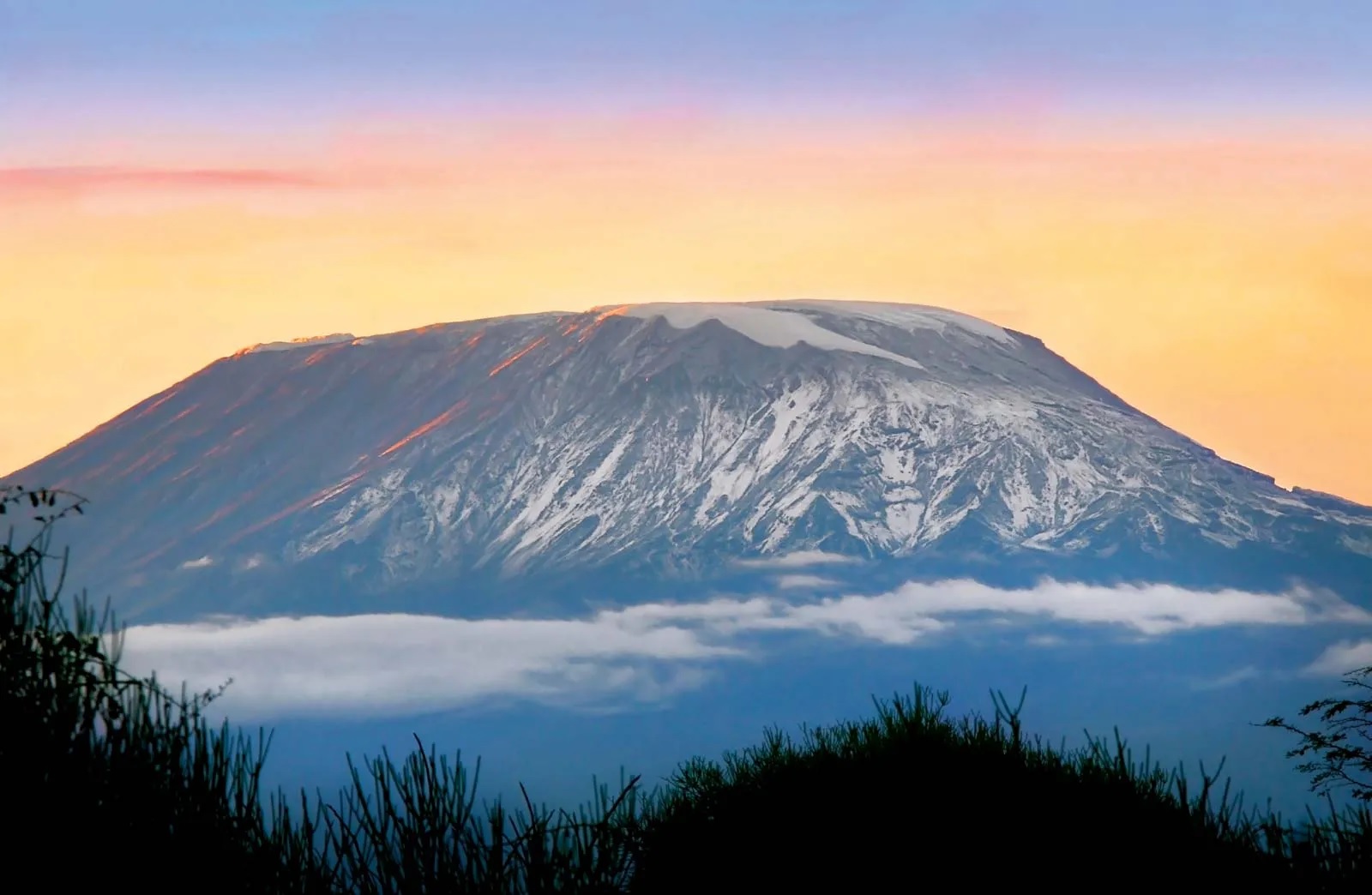
Mount Kilimanjaro, standing proudly as the highest peak on the African continent, is a mesmerizing landmark that has captivated climbers and adventurers for centuries. Located in Tanzania, this majestic mountain holds various intriguing facts that add to its allure and mystique. From its unique geographical features to the challenging treks it offers, Mount Kilimanjaro is an icon worth exploring. In this article, we will delve into 19 captivating facts about Mount Kilimanjaro, illuminating its breathtaking beauty, rich history, and fascinating characteristics. So, sit back, relax, and embark on a virtual journey to uncover the wonders that await on this mighty mountain.
Key Takeaways:
- Mount Kilimanjaro is Africa’s tallest mountain, home to diverse ecosystems, and a UNESCO World Heritage Site. Climbing it is challenging but achievable, offering breathtaking views and a once-in-a-lifetime experience.
- The mountain has cultural significance for local tribes, attracts various wildlife, and is a significant source of water. It has inspired countless literary works and has strict regulations for climbers to protect its delicate ecosystem.
Kilimanjaro is the tallest mountain in Africa.
Standing proudly at a staggering height of 5,895 meters (19,341 feet), Mount Kilimanjaro is the highest peak in Africa and one of the Seven Summits of the world.
It is a dormant volcano.
Beneath its snow-capped peaks lies a dormant volcano. However, despite its inactivity, scientists believe that there is still geothermal activity deep within the mountain.
Kilimanjaro has three volcanic cones.
The mountain is composed of three distinct volcanic cones: Kibo, Mawenzi, and Shira. Kibo is the highest cone and is where the summit, Uhuru Peak, is located.
It is a popular destination for climbers.
Every year, thousands of adventurers from around the world set out to conquer Mount Kilimanjaro. Its accessibility and stunning beauty make it a sought-after destination for both experienced climbers and amateurs.
Kilimanjaro is home to diverse ecosystems.
As climbers ascend the mountain, they pass through distinct ecological zones, including lush rainforests, alpine meadows, moorlands, and barren, glacier-covered landscapes.
The mountain has five different climate zones.
From the hot and humid lower slopes to the freezing temperatures at the summit, Kilimanjaro encompasses five unique climate zones due to its varying altitude and topography.
It is a UNESCO World Heritage Site.
In recognition of its natural significance and cultural value, Mount Kilimanjaro was designated as a UNESCO World Heritage Site in Its protected status ensures its preservation for future generations.
Kilimanjaro is a challenging but achievable climb.
While climbing Mount Kilimanjaro requires physical fitness and mental strength, it does not demand any technical climbing skills. With the right preparation and determination, reaching the summit is within the grasp of many.
The mountain attracts various wildlife.
Despite the harsh conditions, several species of wildlife call Kilimanjaro their home, including elephants, buffalos, leopards, and various bird species. The lower slopes are particularly rich in biodiversity.
Kilimanjaro has receding glaciers.
Due to global warming, the glaciers on Kilimanjaro have been diminishing in size over the years. Experts predict that they might disappear completely within a few decades.
The first recorded ascent of Kilimanjaro was in 1889.
German geologist Hans Meyer and Austrian mountaineer Ludwig Purtscheller were the first to successfully reach the summit of Mount Kilimanjaro on October 6, 1889.
Kilimanjaro has different climbing routes.
There are several routes available to climbers, each offering a unique experience and level of difficulty. Some popular routes include the Marangu, Machame, and Lemosho routes.
The mountain has cultural significance for local tribes.
Mount Kilimanjaro is located in Tanzania, and it holds cultural significance for the Chagga people who have lived around the mountain for centuries.
The oldest person to climb Kilimanjaro was 87 years old.
In 2019, Anne Lorimor became the oldest person to summit Mount Kilimanjaro at the age of Her remarkable achievement inspired many.
Kilimanjaro offers breathtaking panoramic views.
From the summit of Mount Kilimanjaro, climbers are rewarded with awe-inspiring panoramic views of the surrounding landscapes, including the plains of Africa and the distant Mount Meru.
The mountain is a significant source of water.
Mount Kilimanjaro’s glaciers and snowmelt contribute to several rivers and streams that provide water to local communities and wildlife, playing a crucial role in the region’s ecosystem.
Kilimanjaro has inspired countless literary works.
Its majestic presence and allure have captivated the imaginations of authors and poets throughout history, creating a rich literary legacy associated with Mount Kilimanjaro.
The trek to Kilimanjaro’s summit is a once-in-a-lifetime experience.
Reaching the summit of Mount Kilimanjaro is a monumental achievement that leaves climbers with a profound sense of accomplishment and a deep connection to the beauty of nature.
Kilimanjaro has strict regulations for climbers.
In order to protect the delicate ecosystem of the mountain, climbers are required to obtain permits, adhere to designated routes, and follow guidelines set by the park authorities.
These 19 captivating facts about Mount Kilimanjaro showcase the allure and significance of this iconic African mountain. From its towering presence to its cultural and ecological importance, Kilimanjaro continues to captivate the hearts and minds of adventurers from around the world. Whether you dream of conquering its summit or simply marveling at its beauty from afar, Mount Kilimanjaro truly stands as a testament to the power and majesty of nature.
Conclusion
In conclusion, Mount Kilimanjaro is a truly mesmerizing landmark that captivates adventurers and nature enthusiasts around the world. Its towering presence, breathtaking scenery, and unique ecosystems make it a bucket-list destination for many. Whether you are an experienced climber or simply want to soak in the beauty from a distance, Mount Kilimanjaro offers an unforgettable experience.
From its rich cultural heritage to its challenging trekking routes, there is no shortage of reasons why Mount Kilimanjaro continues to be one of the most sought-after landmarks in the world. So, if you’re looking for an adventure that combines stunning landscapes, physical exertion, and a sense of accomplishment, consider adding Mount Kilimanjaro to your travel itinerary.
Experience the awe-inspiring beauty of Africa’s highest peak and create memories that will last a lifetime. The journey to the top of Mount Kilimanjaro is not just about reaching the summit; it’s about embracing the challenges, immersing yourself in nature, and discovering your own strength along the way. So, what are you waiting for? Start planning your Mount Kilimanjaro adventure today!
FAQs
1. How tall is Mount Kilimanjaro?
Mount Kilimanjaro stands at an impressive height of 5,895 meters (19,341 feet) above sea level.
2. Can I climb Mount Kilimanjaro without any climbing experience?
While previous climbing experience is not required, being physically fit and mentally prepared is essential for a successful ascent of Mount Kilimanjaro.
3. Are there age restrictions for climbing Mount Kilimanjaro?
There are no strict age restrictions, but climbers must be at least 10 years old. It is important to consult with your doctor and ensure you are in good health before attempting the climb.
4. How long does it take to climb Mount Kilimanjaro?
The duration of the climb depends on the route chosen, but most treks take between 5 and 9 days.
5. Is climbing Mount Kilimanjaro dangerous?
While climbing Mount Kilimanjaro does involve risks, proper planning, preparation, and the support of experienced guides greatly mitigate these risks.
6. Do I need special permits to climb Mount Kilimanjaro?
Yes, climbers are required to obtain permits from the Kilimanjaro National Park authorities, which are typically arranged by tour operators.
7. Is it possible to see wildlife while climbing Mount Kilimanjaro?
Although wildlife sightings are not the main focus of climbing Mount Kilimanjaro, certain routes pass through areas where it is possible to encounter wildlife, such as buffalo, monkeys, and various bird species.
Was this page helpful?
Our commitment to delivering trustworthy and engaging content is at the heart of what we do. Each fact on our site is contributed by real users like you, bringing a wealth of diverse insights and information. To ensure the highest standards of accuracy and reliability, our dedicated editors meticulously review each submission. This process guarantees that the facts we share are not only fascinating but also credible. Trust in our commitment to quality and authenticity as you explore and learn with us.


